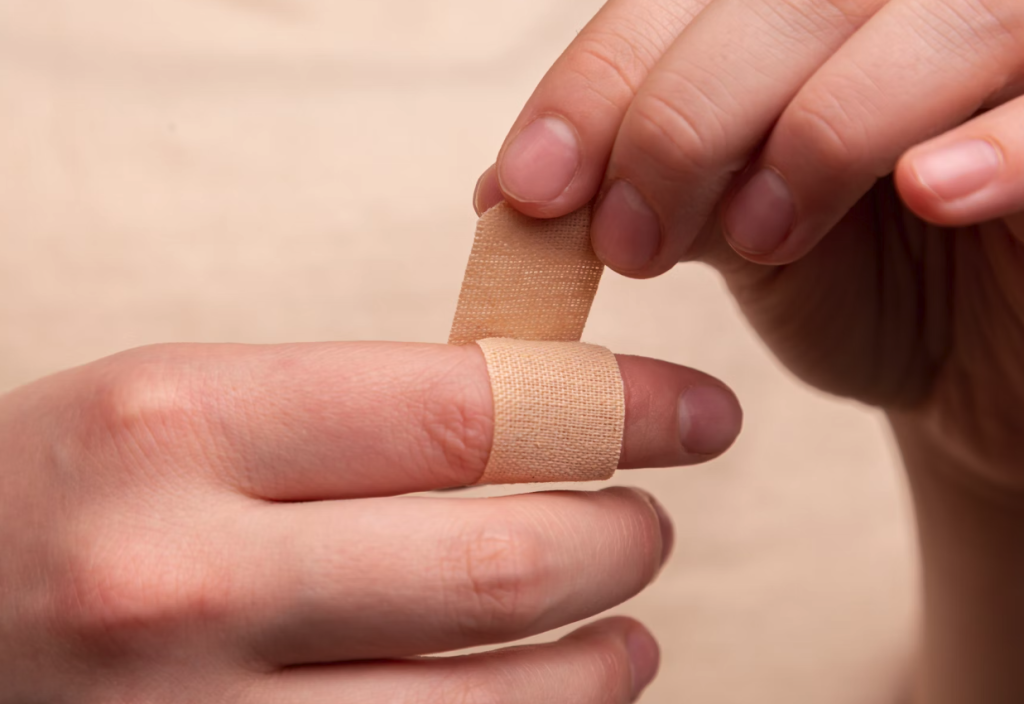In commercial settings, fire safety is of paramount importance to ensure all staff and visitors are protected in the event of a fire. Our accredited team at Protect & Detect specialise in providing first class fire safety services to all commercial premises, ensuring they are as safe as possible from the threat of a fire.
Our company ethos is to make sure all businesses are fully prepared in the case of an emergency.
With this in mind, our experts have put together a guide to the different skin burn levels and the most efficient ways to treat them so emergency situations are dealt with correctly.

What is a burn?
While many may think the answer to this question is obvious, it’s important to make clear how burns are caused and the symptoms to look out for so they can be treated correctly.
Burns are caused by dry heat such as an iron or fire making contact with the skin, and are categorised into three primary types depending on the severity of damage:
- first-degree
- second-degree
- third-degree
While the minor inflammations of first-degree burns can heal without serious health complications, more serious third-degree burns cause the most damage and, therefore, require immediate emergency medical attention.
Different skin burn levels:
First-degree burns
First-degree burns, also referred to as ‘superficial burns’, can be diagnosed by red, non-blistered, peeling skin which causes minor damage to the top layer of skin.
The healing period for first-degree burns will usually take three to six days, over which time symptoms will disappear as the skin cells shed.
Remember: you must seek medical attention if the burn affects a large area of your skin and if it’s on your face or a major joint.
Second-degree burns
These burns are more serious than first-degree burns because the damage goes deeper than the top layer of skin.
This causes the skin to develop sore blisters and become extremely red in appearance. Some blisters may even burst giving the burn a moist texture – remember: do not pop any blisters yourself as this will cause infection and scarring.
Second-degree burns typically take two or three weeks to heal, depending on the damage to the skin as the worse the blisters are, the longer they take to heal.
Therefore, frequent bandaging is required to prevent infection and allow burns to heal quicker.
In some severe cases, where the healing process is slow, skin grafting is required to fix the damage and help restore the skin.
Third-degree burns
This type of burn causes the most damage as it affects every layer of the skin and can even reach the bloodstream, major organs and bones, which can be fatal.
Contrary to common belief, third-degree burns are not the most painful as the damage is so extensive that the nerves become damaged.
There is no specific healing time for third-degree burns, and depending on the cause of the burn they can vary in appearance:
- waxy and white
- charred or dark brown
- raised and leathery
Remember: never, ever attempt to treat a third degree burn yourself. You must call the emergency services immediately and follow these clear steps set out by the NHS while you wait:
- remove the person from the heat source straight away
- cool the burn with cool or lukewarm water for 10-30 minutes
- remove any clothing or jewellery near the burnt area of the skin, but do not touch anything that is stuck to the skin
- make sure the person keeps warm using a blanket but do not place it against the burn
- cover the burn with a layer of cling film
- use painkillers, such as paracetamol or ibuprofen, to treat any pain
The correct action must be quickly taken to prevent further skin damage and minimise the chance of infection. Extensive damage from second- and third-degree burns can mean patients may require:
- surgery
- physical therapy or rehabilitation
- long-term assisted care
The most effective way of taking action against burns is to make sure that buildings have preventative measures in place for optimum fire safety.
This is particularly necessary in certain commercial premises where staff and visitors are put at greater risk of experiencing a fire emergency, such as restaurants and factories.
Our expert team at Protect & Detect carry out thorough fire assessments to identify any potential hazards and take the correct action to remove them.
We are on hand to perform detailed fire risk assessments on your behalf, as well as offering training for a nominated responsible person to conduct the assessment themselves. Our services also include:
- fitting fire detection systems
- fire alarm installation
- fire alarm maintenance
- fitting and testing fire extinguishers
Protect & Detect is a leading fire safety and security company, servicing Ipswich, Colchester, Cambridge, Bury St. Edmunds, Chelmsford and beyond.
Protect & Detect offers a wide range of fire safety and security services including; fire alarms, fire extinguishers, burglar alarms, intruder alarms, fire sprinkler systems, access control, door entry systems, CCTV, barriers, nurse and warden calls. Contact our friendly team today for a quick quote.

